Affiliate disclosure: This post may contain affiliate links. Please see our Privacy Policy.
Birch polypore is a potent medicinal mushroom with a claim to fame. It was one of two mushrooms researchers found on the 5,000-year-old mummy in the Alps named “Ötzi the Iceman.” Researchers speculated that he may have been using the mushroom to treat whipworms as many herbalists of the past and present have done. Along with being anti-parasitic, herbalists believe that birch polypore has antiviral, antibiotic, anti-inflammatory, antifungal, antiseptic, styptic, and anti-cancer properties. Thankfully, it’s relatively easy to forage and tincture right at home.
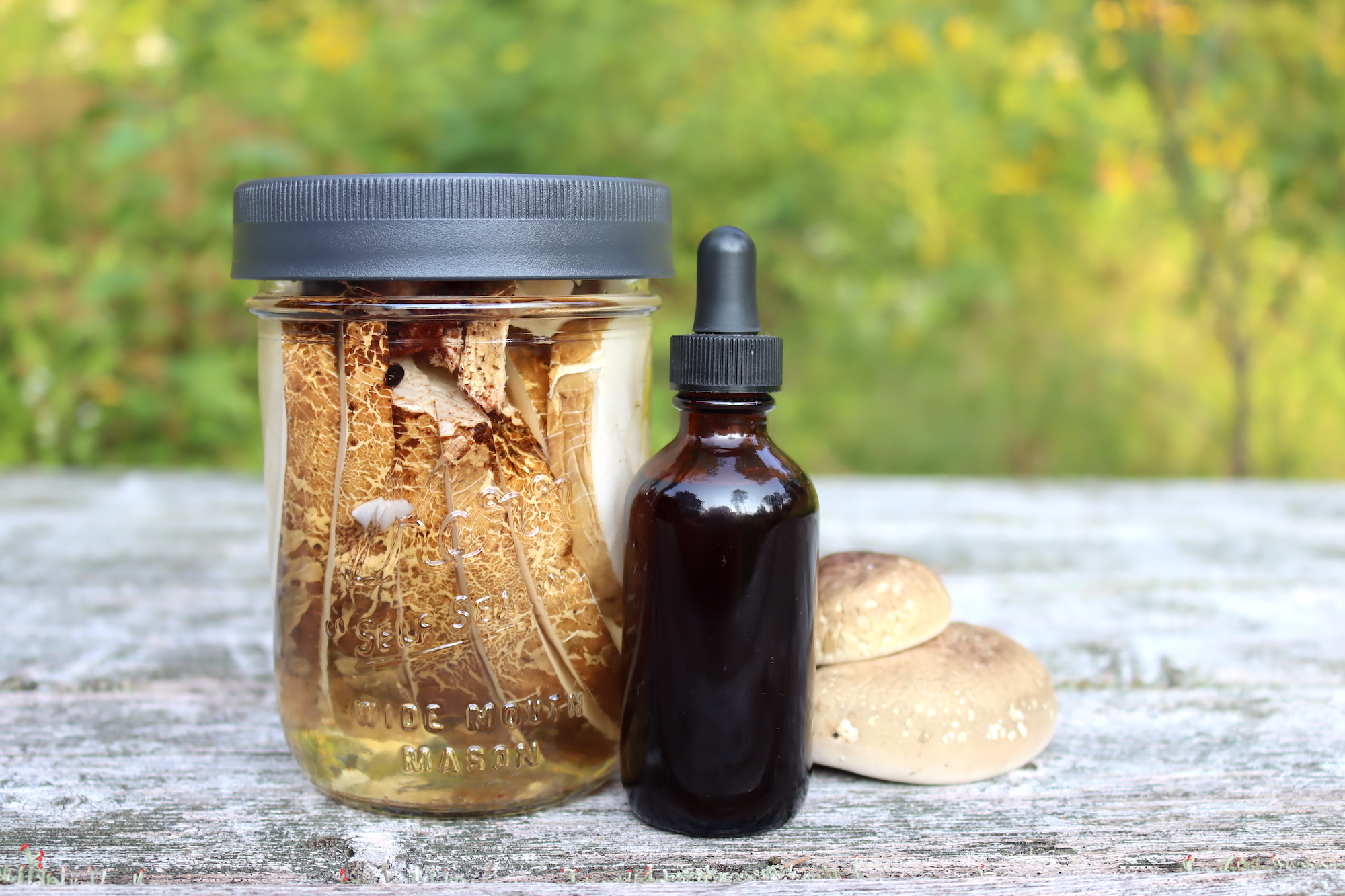
Birch polypore has many incredible benefits but is an essential antiviral and antiparasitic in the herbalist’s medicine kit.
It’s great to reach for when you’re dealing with any type of viral infection, such as the flu and the common cold. Scientists are also exploring its antiviral power for treating more severe conditions like HIV and encephalitis.
Much like Ötzi the Iceman, Herbalists of the ancient world commonly used birch polypore preparations to treat parasitic infections like tapeworms and whipworms.
Additionally, this mushroom once played a major role in wound care. Its potential antibiotic, anti-inflammatory, antiseptic, and styptic properties have made it a top choice for topping bleeding, cleansing, and healing open wounds.
Birch polypore is an excellent mushroom for beginner foragers and herbalists. It’s a hoof-shaped shelf mushroom that only grows on birch trees, making it easy to pick out. The mushroom body is usually tan with a white or cream underside covered with tiny pores.
Birch polypores parasitize living birch trees and persist fruiting on them until the tree dies and rots away. While it’s bad news for the birch tree, this is great news for you as a forager because it means you can often get multiple harvests from the same tree.
It’s also widespread in the northern hemisphere. You can find birch polypores growing in North America, Europe, and Asia. Many birches are fast-growing trees that are characteristic of early successional forests. Northern forests that were logged or naturally cleared through floods or other events in the last 50 years can be a great place to start your search.
The fruiting bodies of birch polypores are annual mushrooms that emerge in spring or summer. They usually remain throughout the winter but slowly deteriorate. You want to harvest fresh-looking mushrooms rather than old ones that have become brown or blackened.
This guide will help you identify birch polypore.
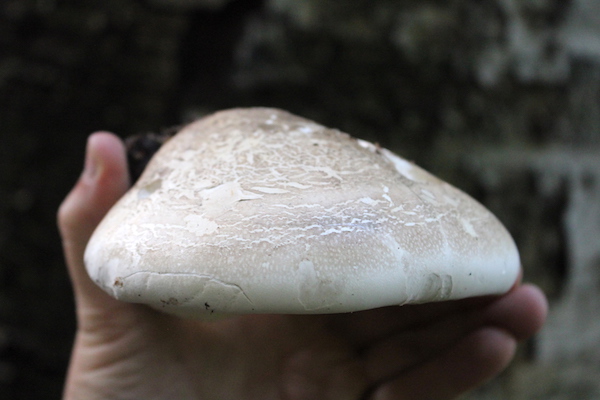
Birch Polypore Tincture Uses
Herbalists use birch polypore mushroom tincture internally to treat various ailments. It also has some limited use as a topical herbal remedy.
Topically, birch polypore tincture is used for:
- Reducing Inflammation
- Cleansing and Healing Wounds
Internally, birch polypore tincture is used to:
- Fight Viral Infections
- Treat Parasitic Infections
- Fight Fungal and Bacterial Infections
- Reduce Inflammation
Additionally, the herb is currently being investigated for its potential:
- Treat HIV
- Anti-Cancer Properties
In these cases, research is ongoing, and more work is needed to establish whether or not the benefits are scientifically significant.
Benefits of Birch Polypore Tincture
Traditionally, herbalists have valued birch polypore preparations for their antiviral, immune-boosting, antibacterial, antiparasitic, anti-inflammatory, and anticancer properties. The discovery of the 5,000 Ötzi the Iceman mummy, with his birch polypore, has pushed this remedy back into focus both for herbalists and scientific researchers.
Scientists have hypothesized that Ötzi may have been using birch polypore to treat his whipworm infection. Birch polypore contains agaric acid, which acts as a laxative, and oils that are toxic to metazoans and have antibiotic properties, acting against mycobacteria.
Modern studies have shown that birch polypore extracts also enhance the body’s immune response. A 2018 study found that the extract encourages the maturation of dendritic cells, an important type of immune cell. It also causes a strong increase in IFN-γ release, which plays a significant role in modulating the immune response. Further, it helped protect against cell death in monocytes, a type of white blood cell.
Historically, people often used birch polypore as part of their cancer treatment, particularly for stomach, intestinal, and rectal cancers. Though more research is still needed, modern scientists have validated some of these traditional practices. In 2009, a study looking at cells in a laboratory setting found that birch polypore displayed anticancer properties. It decreased tumor cell proliferation, motility, and the induction of morphological changes while displaying low or no toxicity in normal cells.
Birch polypore’s antiviral properties have also been put to the test. In a 2015 study, researchers tested birch polypore extract against the human immunodeficiency virus type 1 (HIV-1). They found that the extract displayed significant antiviral properties and could be a source for new antiviral drugs. In previous studies, it has also shown promising results against viral encephalitis.
Lastly, there is also some modern research supporting the mushroom’s anti-inflammatory properties. A 2003 study found that birch polypore contains six triterpene acids, a type of anti-inflammatory compound. Researchers tested these compounds on mouse ears with induced edema. They found that all six compounds worked to reduce inflammation.
You should use caution and consult your physician if you have a mushroom or fungus allergy before using birch polypore. Herbalists have sometimes used birch polypore as a laxative, as it contains a compound called agaric acid, which can cause bouts of diarrhea. Start with small doses of birch polypore to see how your body reacts.
The dosage for birch polypore tincture may vary with intended use, age, and body size. However, most herbalists recommend taking 1 to 2 droppers full (about 1 to 2 ml) two to three times per day.
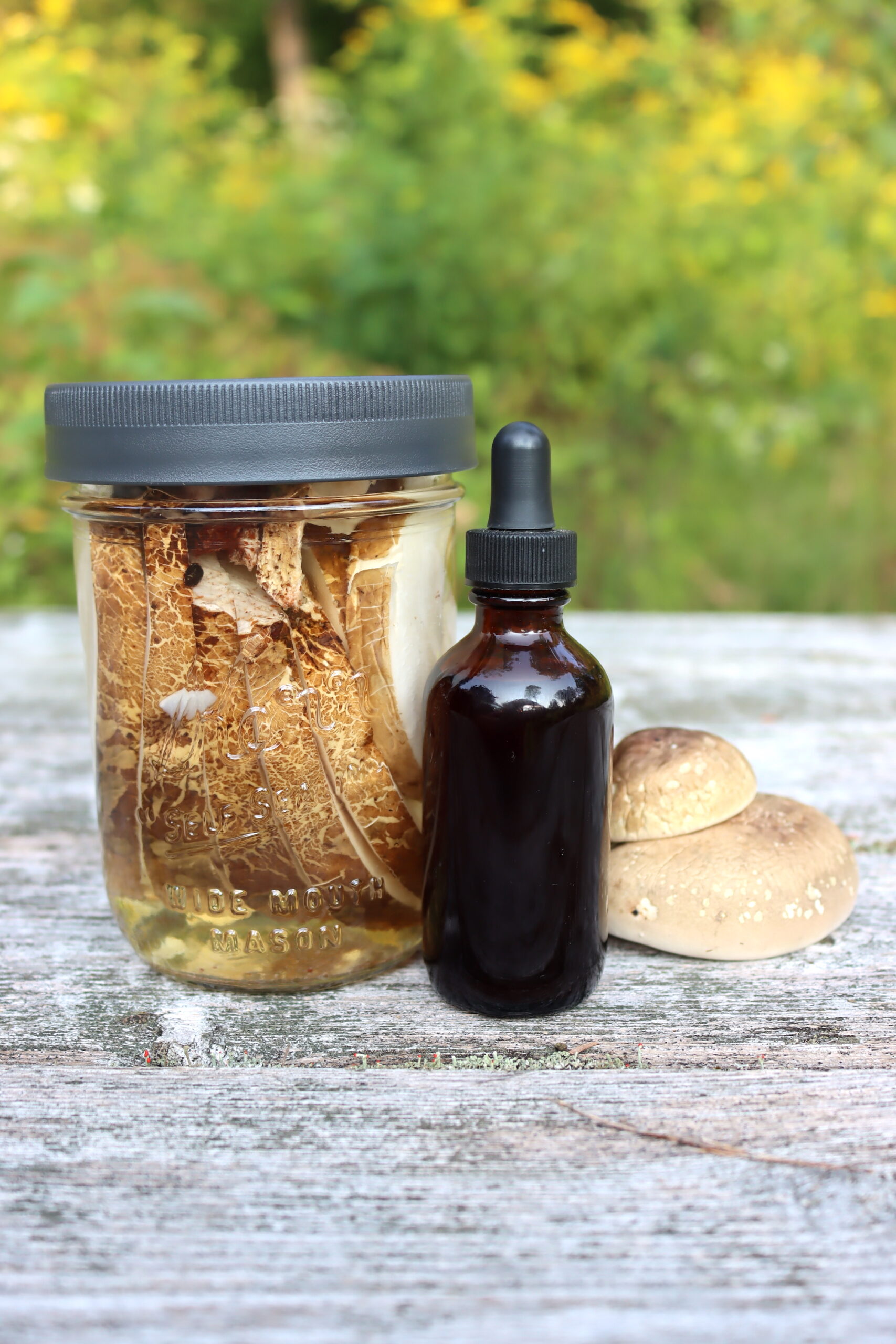
Parts Used for Tincture
To make a birch polypore tincture, you’ll need to find or purchase some birch polypore. When foraging, look during the late spring and summer for fresh-looking mushrooms. They should be tan above and creamy or white below. Mushrooms that have darkened in color or become dried are too old to be effective.
Always be 100% certain of your identification.
While birch polypores are suitable for beginner mushrooms, you should still double-check your findings with a good guidebook, an experienced forager, or another reputable resource.
To make a tincture, you want your birch polypore to be dry. Thankfully, they’re not moist mushrooms, so air-drying them out of direct sunlight works perfectly. If you’re in a hurry, you can also slice them and pop them into a dehydrator on low.
If you can’t find any birch polypore growing near you or are uncomfortable foraging for birch polypore, you can order dried birch polypore online. Several herbalists carry birch polypore on their websites and Etsy shops.
If you haven’t done so already, it’s ideal to slice your birch polypore into pieces. This will make it easier to work with and ensure it absorbs the tincture liquid well.
How to Make Birch Polypore Tincture
Making a birch polypore tincture is a little more involved than making a typical herbal tincture like oregano or chickweed. However, it’s still easy to complete at home with just a few simple steps.
Birch polypore contains both alcohol-soluble compounds called triterpenes and water-soluble compounds called beta-glucans. To get the full benefit of birch polypore we want to get all of these compounds through a process called double extraction.
It sounds a bit intimidating, but it’s actually quite easy and still ends with a shelf-stable tincture you can keep on hand for quick use.
To make a birch polypore tincture, you’ll need the following ingredients and equipment:
- Dried Birch Polypore
- Alcohol that’s 80 proof/40% or higher – I use vodka, but anything from whiskey to rum will do it as long as it’s the appropriate proof.
- Spring water or filtered water
- Two one-quart mason jars with lids
- One-gallon stockpot
- Funnel
- Cheesecloth
- Fine mesh sieve
- Amber glass tincture bottles (with dropper)
**Never use isopropyl/rubbing alcohol for tinctures (or any other remedy you plan on ingesting). Even in small amounts, this type of alcohol is toxic and meant for external applications only.
Just like with a more typical tincture, we begin by filling a mason jar about ½ full with your dried, sliced birch polypore. Then we cover them with the alcohol of your choice, filling the jar but leaving about ½ inch of headspace.
Now comes an easy part: set your tincture aside for about one month. You want to keep it somewhere cool and out of direct sunlight and give it a gentle shake about once a day. Tinctures are forgiving, so don’t worry too much if you miss a day or two.
After about one month, it’s time to strain out the birch polypore mushroom pieces, keeping both the alcohol and the birch polypore. We need them both in the following steps! I usually use a cheesecloth and funnel to catch the birch polypore and strain the alcohol into another mason jar.
Next, we’ll extract the water-soluble compounds. Bring ½ gallon of your filtered or spring water to a boil in a stockpot. Once it’s boiling, add the birch polypore you set aside in the previous step.
Reduce the heat and simmer for about 2 hours until the water has reduced to 8 to 16 ounces (¼ to ½ quarts). Keep an eye on the water throughout the 2 hours, and add more water if it evaporates too quickly.
After two hours, remove the pot from the stove and let the water cool. Then, strain out the birch polypore pieces. Now, you can compost them.
Combine your birch polypore-infused alcohol and birch polypore-infused water into one jar and gently shake it. Now you have shelf-stable, double-extracted birch polypore tincture!
For easy use, pour your tincture into your amber tincture bottles and label each bottle with the name, date, and dosage of your tincture. There’s no need to get fancy; I recommend using a small piece of masking tape and a marker. It peels off easily when I’m ready to use the bottle for something else.
Despite adding water, this extract should still contain between 25% and 35% alcohol, which keeps it shelf stable like a typical tincture. This tincture has an incredible shelf lie; just store it somewhere cool and out of direct sunlight.
Birch Polypore Tincture Dosage
I always suggest consulting with a clinical herbalist and your physician, especially if you are undergoing treatment for a serious illness like cancer or HIV. A clinical herbalist will be able to prescribe a specific dosage for your body and needs.
In general, herbalists usually recommend taking 1 to 2 droppers full or 1 to 2 ml of birch polypore tincture 2 to 3 times per day. You can also apply the tincture topically to minor injuries and inflammation. Use a clean cotton ball or cloth to apply it to the affected area.
Birch Polypore Formulations
When fighting viral or parasitic infections, providing your immune system with as much support as possible is a good idea. Herbalists may combine birch polypore tincture with other immune-boosting tinctures like echinacea, oregano, or elderberry.
Anti-inflammatory herbal tinctures like turmeric, ginger, and ashwagandha can also be helpful when combined with birch polypore to treat many inflammatory ailments, including intestinal issues and arthritis.
A clinical herbalist may pair birch polypore with other mushroom tinctures if you’re dealing with cancer. Maitake tincture may help support your immune system and fight cancer. Lion’s mane and reishi can help relieve stress and anxiety during a challenging treatment.
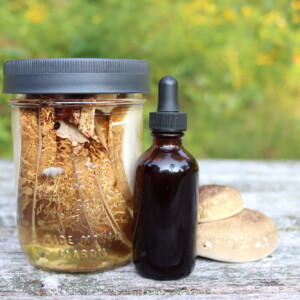
Birch Polypore Tincture
Equipment
- Spring or Filtered Water
- Stockpot
Ingredients
- Birch Polypore dried or fresh, sliced
- Alcohol 80 proof / 40% or higher, e.g., vodka, whiskey, or rum
Instructions
Prepare the Alcohol Extraction:
- Fill one mason jar halfway with dried, sliced birch polypore.
- Cover the mushrooms with alcohol, leaving about ½ inch of headspace.
- Seal the jar and place it in a cool, dark place. Shake gently once a day.
- Let the jar sit for one month.
Strain the Alcohol:
- After one month, strain the alcohol through cheesecloth into a clean mason jar, discarding the birch polypore pieces.
- Keep the alcohol extract for the next step.
Water Extraction:
- In a stockpot, bring ½ gallon of filtered or spring water to a boil.
- Add the birch polypore pieces from the previous step to the boiling water.
- Reduce the heat and simmer for 2 hours, allowing the water to reduce to 8-16 ounces (¼ to ½ quarts). Add more water if necessary.
- After simmering, strain the water through a fine mesh sieve and set aside.
Combine Alcohol and Water Extracts:
- Combine the alcohol extract and the water extract into one jar and gently shake.
- This creates your double-extracted birch polypore tincture.
Bottle and Label:
- Pour the tincture into amber glass tincture bottles with droppers.
- Label each bottle with the name, date, and dosage (1 to 2 droppers full, 2-3 times per day).
Storage:
- Store the tincture in a cool, dark place. It will remain shelf-stable for months, maintaining between 25-35% alcohol.
Notes
Uses
- Internally: Helps fight viral, parasitic, fungal, and bacterial infections. Can support the immune system and reduce inflammation.
- Topically: Use for wound care, to reduce inflammation, and to cleanse open wounds.
- May also be used for its potential anti-cancer properties and HIV treatment, though further research is needed.
- Consult a clinical herbalist for specific dosage, but in general, the dosage for this type of tincture is usually 1 to 2 droppers full (1-2 ml), 2-3 times per day for internal use.
- Apply topically to minor injuries or inflammation with a clean cotton ball or cloth.
Additional Notes
- Birch polypore is easy to forage in late spring and summer, typically on birch trees. Ensure you are 100% confident in your identification before harvesting.
- Safety First: Consult with a healthcare provider if you have any concerns or are using it for serious conditions such as cancer or HIV.
- Shelf Life: The tincture will last for several months when stored properly.
Troubleshooting Tips
- Cloudy Tincture: It’s completely normal to see white clumps or flakes form in your tincture after combining the alcohol and water extracts. This happens because some compounds in plants, like those found in birch polypore, are not fully soluble in either water or alcohol. When these compounds come into contact with both solvents, they may precipitate out, appearing as tiny pieces or flakes. These clumps are harmless and don’t mean the tincture is bad or unsafe to use. To resolve this, simply strain the mixture through a fine mesh strainer or cheesecloth to remove any excess particles. The tincture will still retain all of its beneficial properties, just without the clumps. The cloudiness in the tincture is also normal, as both alcohol and water extracts can sometimes appear a bit murky. Once strained, the tincture will be clear and ready for use.
- Fermentation: Ensure your jar is sealed tightly, and the alcohol percentage is high enough to prevent spoilage.
- Alcohol Issues: Only use 80-proof alcohol or higher to extract compounds. Avoid isopropyl alcohol, as it is toxic.
Medicinal Mushroom Tinctures
The beneficial properties of medicinal mushrooms are often best preserved in tinctures, where both the alcohol and water-soluble portions are extracted at the same time.
Herbal Tinctures
Looking for more homemade herbal tinctures?
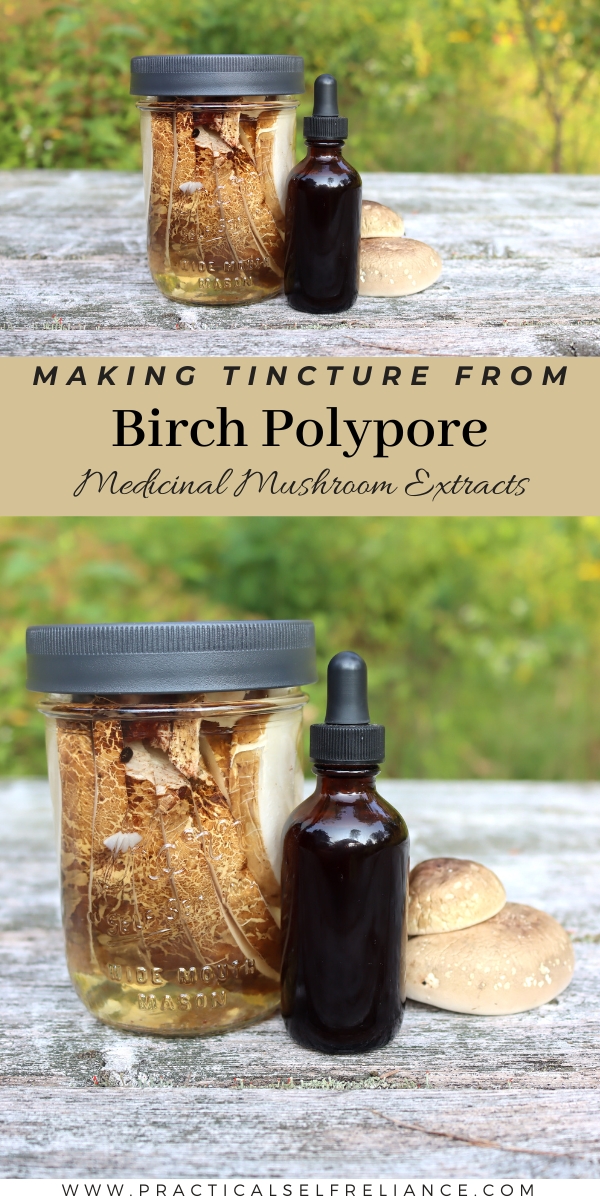
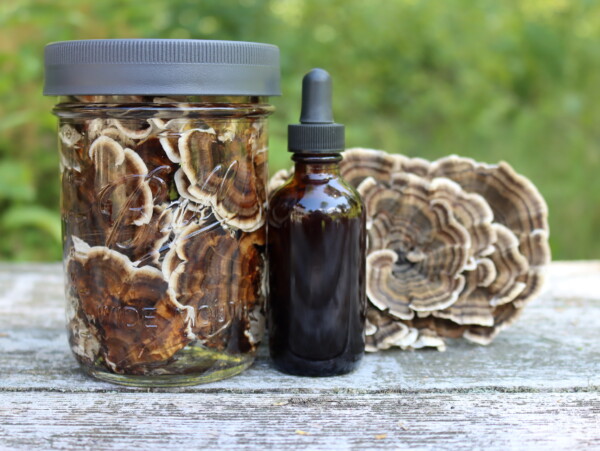
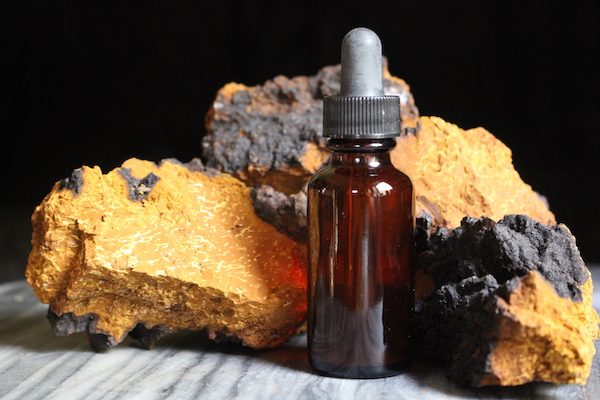
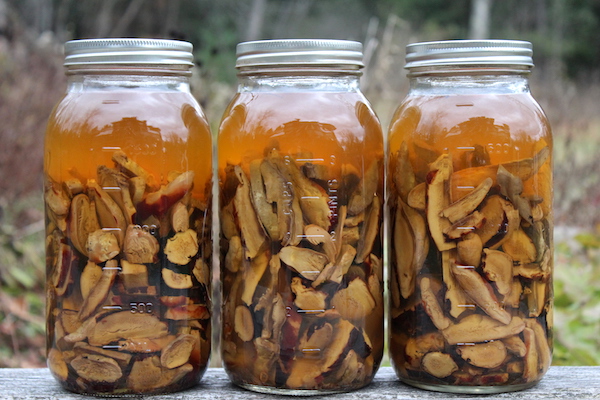
Hello! After combining the water and alcohol extraction some white clumps formed in the jar (they look like flakes, or tiny little pieces of flour in a soup). The mixture is also cloudy, but that seems normal. Any reason to not use it because of the clumps?
Thanks so much!
Some compounds in plants are not completely water or alcohol soluble, and they’ll precipitate out like that. It’s normal. Filter it through a fine mesh strainer or cheesecloth after the infusion is complete.